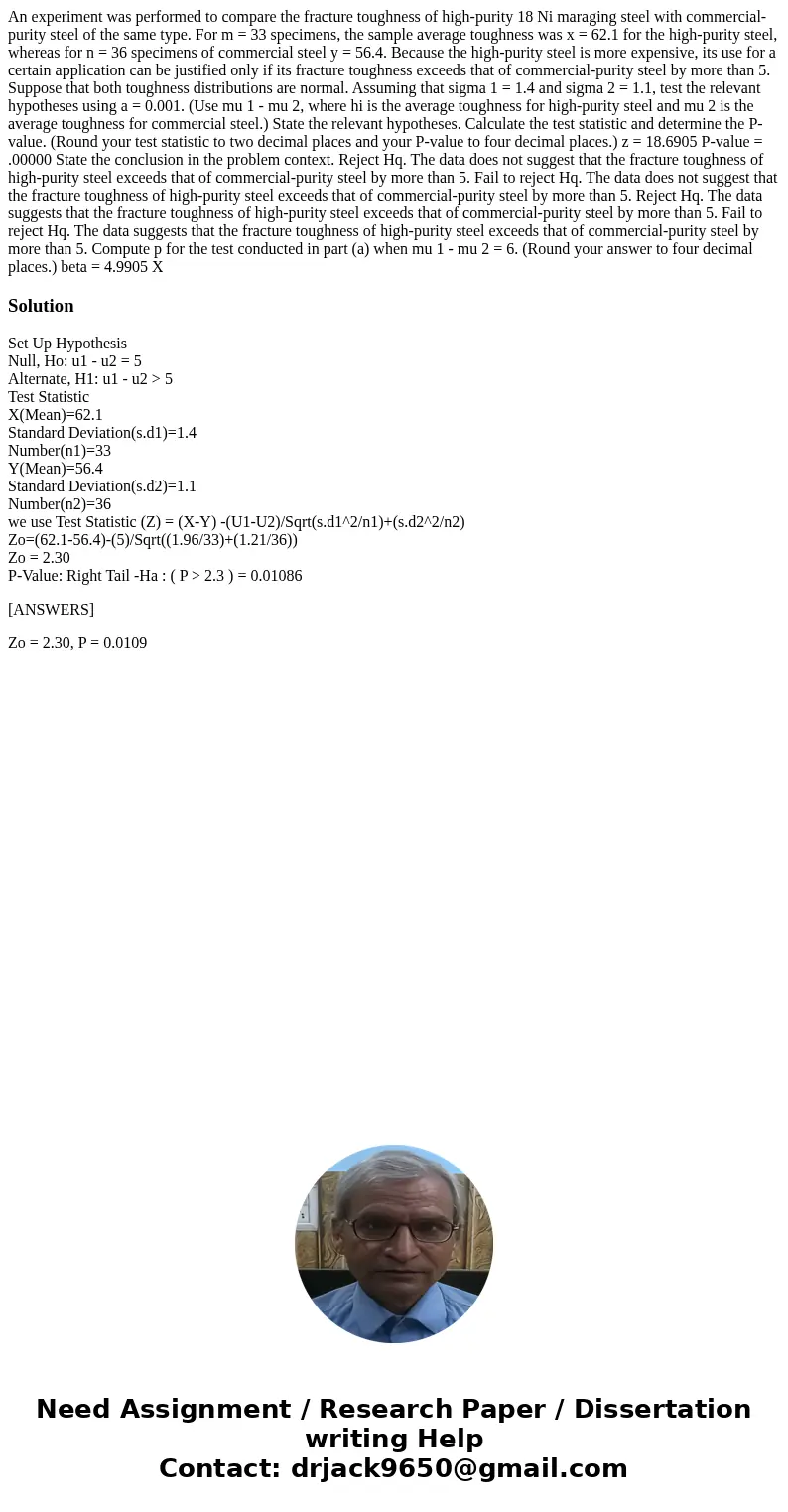An experiment was performed to compare the fracture toughnes
An experiment was performed to compare the fracture toughness of high-purity 18 Ni maraging steel with commercial-purity steel of the same type. For m = 33 specimens, the sample average toughness was x = 62.1 for the high-purity steel, whereas for n = 36 specimens of commercial steel y = 56.4. Because the high-purity steel is more expensive, its use for a certain application can be justified only if its fracture toughness exceeds that of commercial-purity steel by more than 5. Suppose that both toughness distributions are normal. Assuming that sigma 1 = 1.4 and sigma 2 = 1.1, test the relevant hypotheses using a = 0.001. (Use mu 1 - mu 2, where hi is the average toughness for high-purity steel and mu 2 is the average toughness for commercial steel.) State the relevant hypotheses. Calculate the test statistic and determine the P-value. (Round your test statistic to two decimal places and your P-value to four decimal places.) z = 18.6905 P-value = .00000 State the conclusion in the problem context. Reject Hq. The data does not suggest that the fracture toughness of high-purity steel exceeds that of commercial-purity steel by more than 5. Fail to reject Hq. The data does not suggest that the fracture toughness of high-purity steel exceeds that of commercial-purity steel by more than 5. Reject Hq. The data suggests that the fracture toughness of high-purity steel exceeds that of commercial-purity steel by more than 5. Fail to reject Hq. The data suggests that the fracture toughness of high-purity steel exceeds that of commercial-purity steel by more than 5. Compute p for the test conducted in part (a) when mu 1 - mu 2 = 6. (Round your answer to four decimal places.) beta = 4.9905 X
Solution
Set Up Hypothesis
Null, Ho: u1 - u2 = 5
Alternate, H1: u1 - u2 > 5
Test Statistic
X(Mean)=62.1
Standard Deviation(s.d1)=1.4
Number(n1)=33
Y(Mean)=56.4
Standard Deviation(s.d2)=1.1
Number(n2)=36
we use Test Statistic (Z) = (X-Y) -(U1-U2)/Sqrt(s.d1^2/n1)+(s.d2^2/n2)
Zo=(62.1-56.4)-(5)/Sqrt((1.96/33)+(1.21/36))
Zo = 2.30
P-Value: Right Tail -Ha : ( P > 2.3 ) = 0.01086
[ANSWERS]
Zo = 2.30, P = 0.0109

 Homework Sourse
Homework Sourse